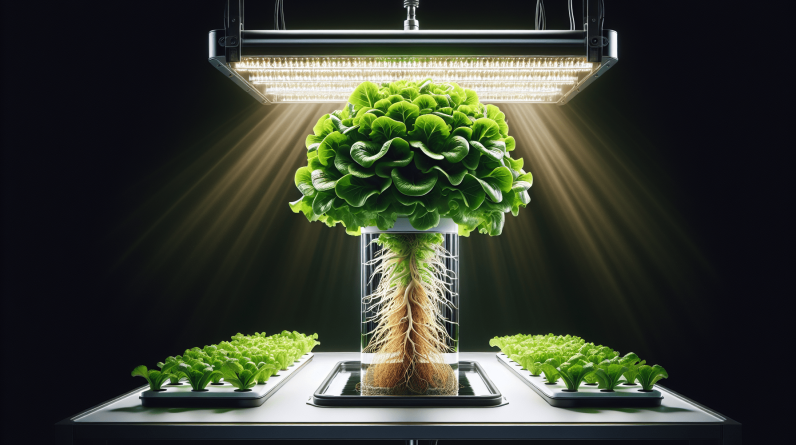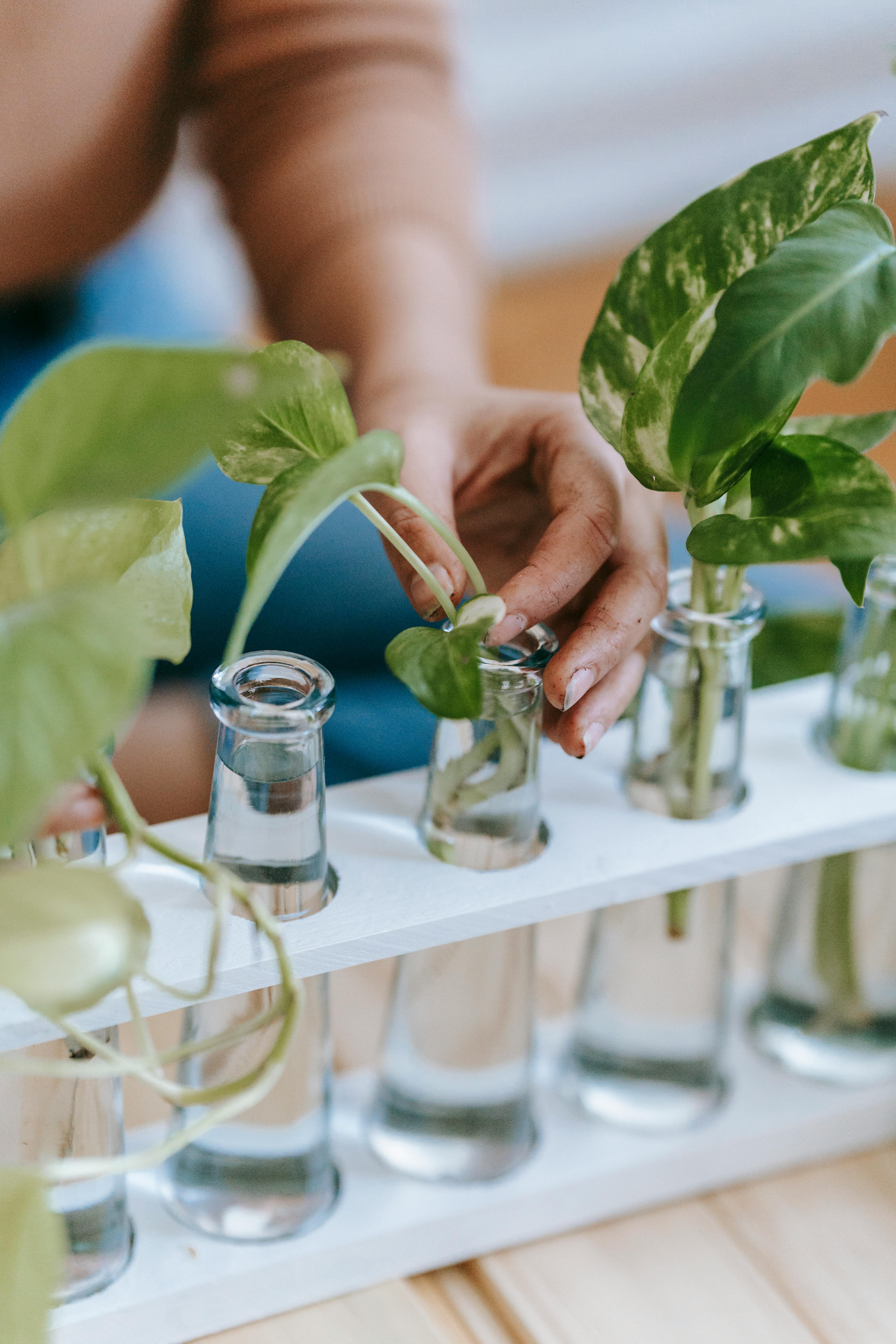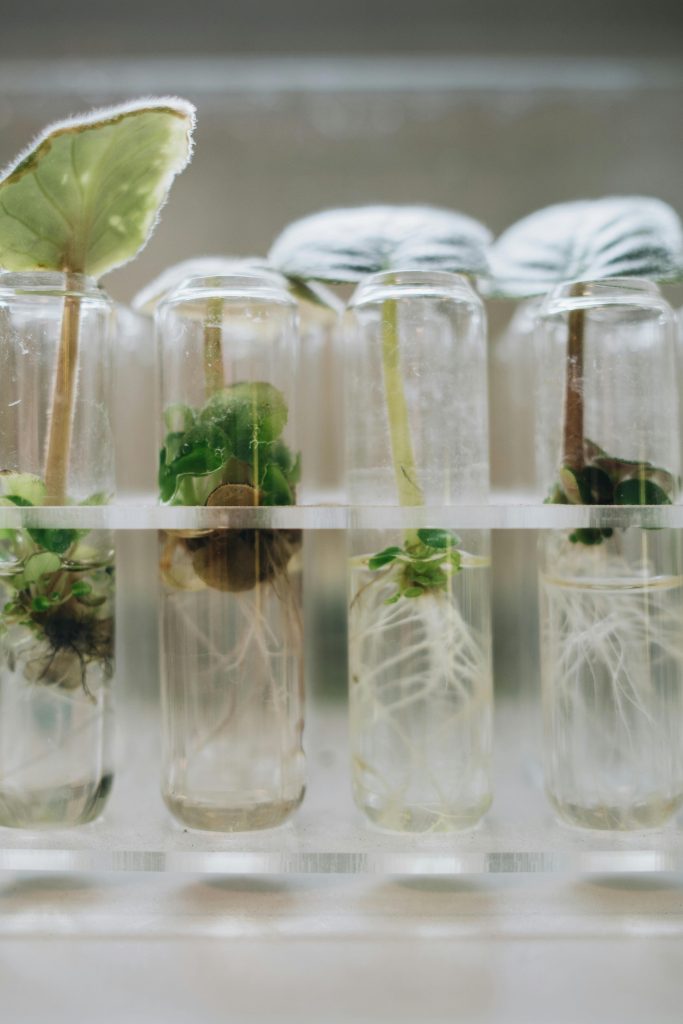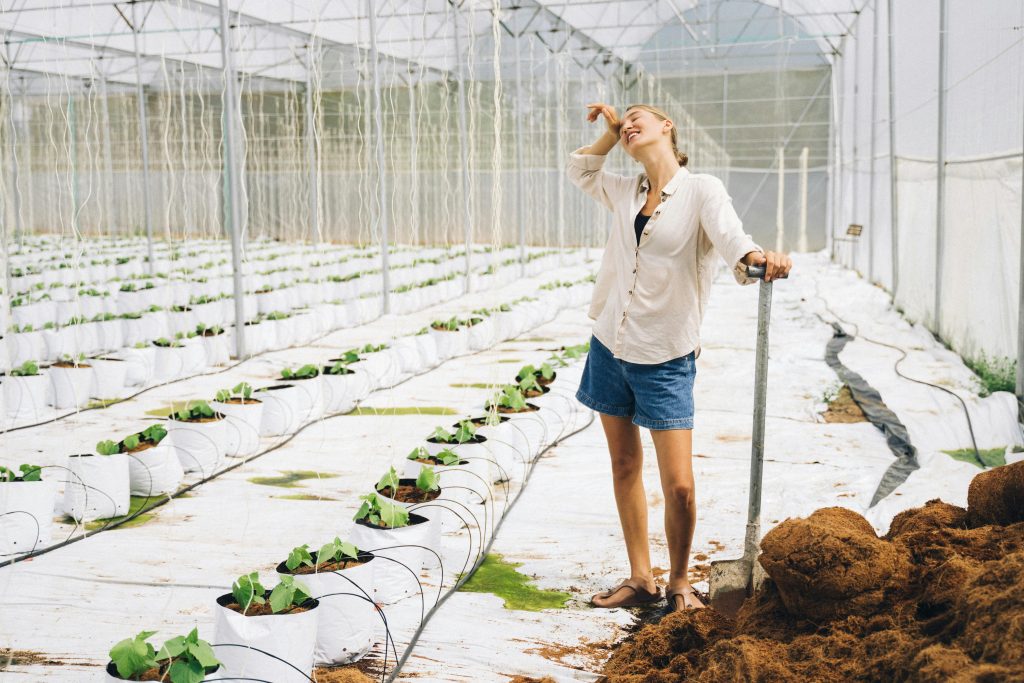
Are you interested in exploring a unique and efficient way of growing plants without soil? Hydroponic growing systems could be just what you’re looking for! With a plethora of benefits, hydroponics is an excellent choice for modern gardening enthusiasts. In this complete guide, you will learn everything you need to know to get started with hydroponic growing as a beginner. So, let’s dive right in and discover the world of hydroponics together!
What is Hydroponic Growing?
Have you ever wondered how plants can thrive without soil? Hydroponic growing is a method of cultivating plants in a nutrient-rich water solution without the use of traditional soil. By delivering essential nutrients directly to the plant roots, this system promotes faster growth and increased yields. This allows plants to focus their energy on growth rather than searching for nutrients in the soil.
Benefits of Hydroponic Growing
Have you ever thought about the advantages of using a hydroponic system for your plants? Hydroponic growing offers numerous benefits, including faster plant growth, higher yields, reduced water usage, and year-round cultivation. By eliminating soil from the equation, hydroponic systems also minimize the risk of soil-borne diseases and pests, resulting in healthier plants. This method of growing crops is not only efficient but also sustainable, making it an attractive option for beginners.
Types of Hydroponic Systems
Are you curious about the different types of hydroponic systems available to you as a beginner? There are several popular options to choose from, each with its own unique set of advantages and challenges. Let’s explore some of the most common types of hydroponic systems:
Deep Water Culture (DWC)
DWC systems are one of the simplest and most beginner-friendly hydroponic setups. In this system, plant roots are submerged in a nutrient solution contained in a reservoir. An air pump provides oxygen to the roots, promoting healthy growth. DWC systems are easy to set up and maintain, making them ideal for beginners.
Nutrient Film Technique (NFT)
NFT systems involve a constant flow of nutrient solution running through narrow channels, allowing plant roots to access water and nutrients. This system is highly efficient in water and nutrient usage, making it a popular choice for hydroponic growers. NFT systems require careful monitoring to ensure proper nutrient flow and prevent root drying.
Ebb and Flow (Flood and Drain)
Ebb and flow systems work by intermittently flooding the plant roots with nutrient solution and then draining it back into a reservoir. This cycle provides adequate moisture and nutrients to the plants while allowing the roots to receive oxygen during the drain cycle. Ebb and flow systems are versatile and suitable for growing a variety of plants.
Aeroponics
Aeroponic systems use a misting chamber to deliver nutrients to the plant roots suspended in the air. This method promotes rapid growth due to increased oxygen exposure to the roots. Aeroponic systems are highly efficient in water usage and are perfect for growing plants with limited space.

Essential Components of a Hydroponic System
Are you ready to set up your own hydroponic system? Before you get started, it’s essential to understand the key components required for a successful setup. Let’s take a closer look at the essential elements of a basic hydroponic system:
Reservoir
The reservoir is where the nutrient solution is stored for the plants to access. It should be large enough to hold an ample supply of water and nutrients for your plants. Choose a light-proof container to prevent algae growth in the nutrient solution.
Grow Tray
The grow tray holds the plants and provides support for their root systems. It should be sturdy and spacious enough to accommodate the size of the plants you intend to grow. The grow tray should also be made of materials that are compatible with the nutrient solution to prevent contamination.
Submersible Pump
A submersible pump is used to circulate the nutrient solution from the reservoir to the plants in the grow tray. Choose a pump that is appropriate for the size of your system and can deliver a steady flow of water to the plants. Regular maintenance is essential to prevent clogging and ensure smooth operation.
Air Pump and Air Stone
Plants need oxygen to thrive, even in a hydroponic system. An air pump and air stone are used to oxygenate the nutrient solution, promoting healthy root growth. Ensure that the air pump is compatible with the size of your reservoir and provides adequate aeration for your plants.
Growing Medium
The growing medium supports the plant roots and helps to anchor them in place. Common hydroponic growing mediums include perlite, vermiculite, clay pellets, and rockwool. Choose a medium that is suitable for the type of plants you plan to grow and provides adequate drainage and aeration for healthy root development.
pH and EC Testing Kits
Maintaining the correct pH and electrical conductivity (EC) levels in your nutrient solution is crucial for plant growth. pH testing kits are used to monitor and adjust the acidity of the solution, while EC testing kits measure the nutrient concentration. Regular testing and adjustments are necessary to ensure optimal plant health.
Setting Up Your Hydroponic System
Are you ready to dive into the exciting world of hydroponic growing? Setting up your own system is easier than you might think, especially with the right knowledge and guidance. Follow these steps to create a successful hydroponic setup for your plants:
Step 1: Choose a Suitable Location
Select a well-lit area for your hydroponic system, preferably with access to natural sunlight or artificial grow lights. Ensure that the space is well-ventilated and free from temperature fluctuations to provide an optimal growing environment for your plants.
Step 2: Assemble Your Components
Gather all the essential components of your hydroponic system, including the reservoir, grow tray, submersible pump, air pump, air stone, growing medium, and testing kits. Set up the system according to the manufacturer’s instructions, ensuring that each component is properly connected and functional.
Step 3: Prepare the Nutrient Solution
Mix the required nutrients with water to create a balanced nutrient solution for your plants. Follow the manufacturer’s recommendations for nutrient ratios and adjust the pH and EC levels as needed. Test the solution regularly to monitor its quality and make any necessary adjustments.
Step 4: Plant Your Crops
Place your chosen plants in the grow tray, ensuring that their roots are in direct contact with the nutrient solution. Arrange the plants evenly to maximize space utilization and prevent overcrowding. Monitor the growth of your plants and adjust their placement as needed to promote healthy development.
Step 5: Monitor and Maintain Your System
Regularly check the pH and EC levels of the nutrient solution to ensure optimal growing conditions for your plants. Keep an eye on the water levels in the reservoir and refill it as needed to maintain a consistent supply of nutrients. Clean and sanitize your system periodically to prevent algae growth and contamination.

Best Plants to Grow Hydroponically
Are you wondering which plants are best suited for hydroponic growing as a beginner? While almost any plant can be grown hydroponically, some varieties are more well-suited for this cultivation method. Here are some popular plants that thrive in hydroponic systems:
Leafy Greens
Leafy greens such as lettuce, spinach, kale, and arugula are excellent choices for hydroponic growing. These plants have shallow roots and grow quickly, making them ideal for beginners. Leafy greens are also rich in essential nutrients and can be harvested multiple times for continuous yields.
Herbs
Herbs like basil, parsley, cilantro, and mint are well-suited for hydroponic cultivation. These aromatic plants require minimal space and thrive in nutrient-rich environments. Fresh herbs grown hydroponically are flavorful and can be harvested as needed for cooking and garnishing.
Tomatoes
Tomatoes are popular among hydroponic growers for their high yields and delicious flavor. Dwarf or cherry tomato varieties are well-suited for small hydroponic systems. Tomatoes require regular pruning and support to prevent overcrowding and ensure healthy growth.
Strawberries
Strawberries can be successfully grown hydroponically, providing a bountiful harvest of sweet and juicy fruits. Strawberry plants require ample sunlight and proper pollination to thrive in a hydroponic system. Consider adding a trellis or support structure to maximize fruit production.
Peppers
Peppers, including bell peppers and chili peppers, are well-adapted to hydroponic growing. These plants produce vibrant and flavorful fruits that can be harvested at various stages of ripeness. Peppers require adequate support and spacing to prevent disease and promote fruit development.
Troubleshooting Common Issues
Have you encountered challenges while setting up or maintaining your hydroponic system? Don’t worry, as even experienced growers face occasional issues with their setups. Here are some common problems and solutions to help you troubleshoot your hydroponic system:
Nutrient Deficiency
If your plants exhibit yellowing leaves or stunted growth, they may be experiencing a nutrient deficiency. Check the pH and EC levels of the nutrient solution and adjust them accordingly. Consider increasing the nutrient concentration gradually to provide adequate nutrition to your plants.
Root Rot
Root rot is a common issue in hydroponic systems caused by poor aeration or contaminated water. To prevent root rot, ensure proper oxygenation of the nutrient solution and maintain cleanliness in your system. Trim any affected roots and treat the remaining plants with a hydrogen peroxide solution.
Algae Growth
Algae growth in the nutrient solution can block oxygen delivery to plant roots and lead to nutrient imbalances. To control algae growth, use a light-proof reservoir and cover the grow tray to prevent light infiltration. Regularly clean and sanitize your system to remove algae buildup.
Pests and Diseases
Pests and diseases can affect hydroponic plants, especially in indoor environments. Inspect your plants regularly for signs of pests such as aphids or spider mites. Use natural pest control methods like neem oil or insecticidal soap to manage infestations and prevent the spread of diseases.

Harvesting and Enjoying Your Hydroponic Produce
Are you excited to reap the rewards of your hard work and dedication to your hydroponic system? Harvesting your hydroponically grown produce is a rewarding experience that allows you to enjoy fresh and nutritious fruits, vegetables, and herbs. Here are some tips for harvesting and enjoying your hydroponic produce:
Leafy Greens
Harvest leafy greens like lettuce and spinach by cutting the outer leaves with scissors or shears, allowing the inner leaves to continue growing. Store harvested greens in airtight containers in the refrigerator to maintain freshness and crispness. Enjoy fresh salads and smoothies made with your hydroponic greens.
Herbs
Harvest herbs like basil and mint by snipping stems just above a pair of leaves, encouraging bushier growth. Rinse fresh herbs under cold water and pat them dry before using them in your favorite recipes. Add freshly harvested herbs to soups, salads, sauces, and beverages for a burst of flavor.
Tomatoes
Harvest tomatoes when they are firm and fully colored, gently twisting them from the vine to avoid damaging the plant. Store harvested tomatoes at room temperature to allow them to ripen further or refrigerate them for longer shelf life. Enjoy ripe tomatoes in salads, sandwiches, sauces, and salsas.
Strawberries
Harvest ripe strawberries by gently twisting them from the stem, being careful not to bruise the fruits. Rinse freshly picked strawberries under cold water and pat them dry before enjoying them. Indulge in sweet and succulent strawberries fresh, or use them in desserts, jams, and preserves.
Peppers
Harvest peppers when they reach the desired size and color, using scissors or shears to cut the stems without damaging the plant. Store harvested peppers in the refrigerator to prolong their freshness and flavor. Add colorful peppers to stir-fries, salads, dips, and grilled dishes for a tasty kick.
Conclusion
Congratulations on completing this comprehensive guide to hydroponic growing for beginners! By now, you should have a solid understanding of the benefits of hydroponic systems, the different types of setups available, essential components required, and best plants to grow hydroponically. Remember to start small and gradually expand your hydroponic operation as you gain experience and confidence in your growing skills. With patience, dedication, and a little bit of experimentation, you’ll be well on your way to growing fresh, nutritious crops all year round. Happy growing!










